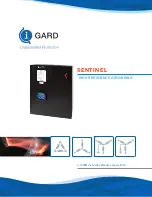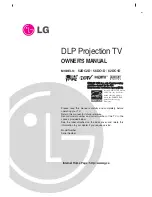
010819
2.3.2 Twin-leg SRD:
A twin-leg SRD is utilized with the housing ends worn on the FBH as shown in Figure 2C. The leg ends are connected, one at a
time for 100% tie-off, to an anchorage within the correct orientation range.
2.4 Rescue:
Rescue operations require specialized equipment that is beyond the scope of this manual. Users are required to have a written rescue
plan in place, and a method to implement it in a timely manner.
2.5 Application Limits:
Take action to avoid moving machinery and thermal, electrical and chemical hazards as contact may cause serious injury or
death. Avoid swing falls. Follow the weight restrictions and recommendations in this manual. Be advised, the SRD discussed in this manual is NOT
rated for Leading Edge applications. The lifeline is vulnerable to damage by sharp edges and abrasive surfaces. Avoid sharp and abrasive surface
hazards as a damaged lifeline may cause serious injury or death.
DO NOT
use the SRD to lift tools, materials, or personnel.
Remove from service any equipment subjected to fall arrest forces.
3. SYSTEM REQUIREMENTS
3.1 Capacity:
The SRD discussed in this manual is rated for a user weight range of
130-310 lbs. (58.9-140.6 kg), including clothing, tools, etc. Use by those exceeding this maximum weight is not allowed.
3.2 Compatibility Of Connectors:
Connectors are considered to be compatible with connecting elements when they have been designed to work
together in such a way that their sizes and shapes do not cause their gate mechanisms to inadvertently open regardless of how they become
oriented. Contact FallTech if you have any questions about compatibility. Connectors must be compatible with the anchorage or other system
components. Do not use equipment that is not compatible. Non-compatible connectors may unintentionally disengage. Connectors must be
compatible in size, shape, and strength. Self-closing, self-locking snap hooks and carabiners are specified by OSHA and ANSI Z359.12. FallTech
offers a wide variety of connectors for use with the 6' SRD. See Table 1-B and Table 1-C.
3.3 Compatibility Of Components:
Equipment is designed for use with approved components and subsystems only. Substitutions or replacements
made with non- ANSI Z359 compliant components or subsystems may jeopardize compatibility of equipment and may affect the safety and
reliability of the complete system. Ensure compatibility between the connectors if non-FallTech components are used for fall protection.
3.4 Making Connections:
Only use self-locking snap hooks, rebar hooks, and carabiners with this equipment. Only use connectors that are suitable
to each application. Ensure all connections are compatible in size, shape and strength. Do not use equipment that is not compatible. Visually
ensure all connectors close and lock completely. Connectors (snap hooks, rebar hooks, and carabiners) are designed for use only as specified in this
manual. See Figure 13 in Appendix B.
3.5 Personal Fall Arrest System:
A PFAS is an assembly of components and subsystems used to arrest a person during a fall event. A PFAS is
typically composed of an anchorage and a FBH, with an energy absorbing connecting device, i.e., a SAL, an SRD, or a Fall Arrester Connecting
Subsystem (FACSS) attached to the dorsal D-ring of the FBH. PFAS components used with this equipment must meet applicable ANSI Z359
requirements and OSHA regulations. OSHA requires a personal fall arrest system be able to arrest the worker’s fall with a maximum arresting force
of 1,800 lbs., and limit the free fall to 6 feet or less. If the maximum free fall distance must be exceeded, the employer must document, based on
test data, that the maximum arresting force will not be exceeded, and the personal fall arrest system will function properly.
3.5.1 Average Arrest Force and Arrest Distance:
The SRD discussed in this manual is classified by ANSI Z359.14 as a Class B device. This ANSI
standard allows a Class B device to have a Maximum Arrest Distance of 54”, an Average Arrest Force of 900 lbs, and a Maximum Arrest Force of
1,800 lbs. Testing is carried out in two unit orientations; SRD attached to overhead anchor, and SRD attached to weight with the leg end connector
attached to an overhead anchor. Testing is also conducted under various environmental conditions; at ambient temperature, hot, cold, and in wet
conditions. In manufacturer's tests, typical performance attributes of the SRD discussed in this manual are;
•
Maximum Arrest Distance = 25.4"
•
Average Arrest Force = 832 lbs
•
Maximum Arrest Force = 1,342 lbs
NOTE:
Arrest distance is one part of the Minimum Required Fall Clearance (MRFC). The MRFC is determined by consideration of multiple factors in
fall protection. MRFC is discussed in detail in Section 4.
3.6
Personal Fall Arrest System Anchorage Strength:
An anchorage selected for PFAS application must have the strength to sustain a static load
applied in the direction permitted by the PFAS of at least two times the maximum arrest force permitted when certification exists, or 5,000 lbs.
(22.2 kN) in the absence of certification.
3.7 Definitions:
The following are definitions of terms as defined in ANSI Z359.0-2012.
Authorized Person:
A person assigned by the employer to perform duties at a location where the person will be exposed to a fall hazard (otherwise
referred to as “user” for the purpose of these instructions).
Certified Anchorage:
An anchorage for fall arrest, positioning, restraint, or rescue systems that a Qualified Person certifies to be capable of
supporting the potential fall forces that may be encountered during a fall or that meet the criteria for a certified anchorage prescribed in this
standard.
Competent Person:
One who is capable of identifying existing and predictable hazards in the surroundings or working conditions which are
unsanitary, hazardous, or dangerous to employees, and who has authorization to take prompt corrective measures to eliminate hazards.
Harness Stretch:
Amount of vertical travel of the Full Body Harness D-ring during a fall arrest.
Qualified Person:
A person with a recognized degree or professional certificate and with extensive knowledge, training, and experience in the fall
protection and rescue field who is capable of designing, analyzing, evaluating and specifying fall protection and rescue systems to the extent
required by this standard.
Rescuer:
Person or persons other than the rescue subject acting to perform an assisted rescue by operation of a rescue system.
4. INSTALLATION AND USE
4.1 Plan the Personal Fall Arrest System:
WARNING
Do not alter or intentionally misuse this equipment. Consult FallTech when using this equipment in combination with components or
subsystems other than those described in this manual.
Do not connect rebar hooks, large carabiners, or large snap hooks to the FBH dorsal D-rings as this may cause a roll-out condition and/or
unintentional disengagement.




































